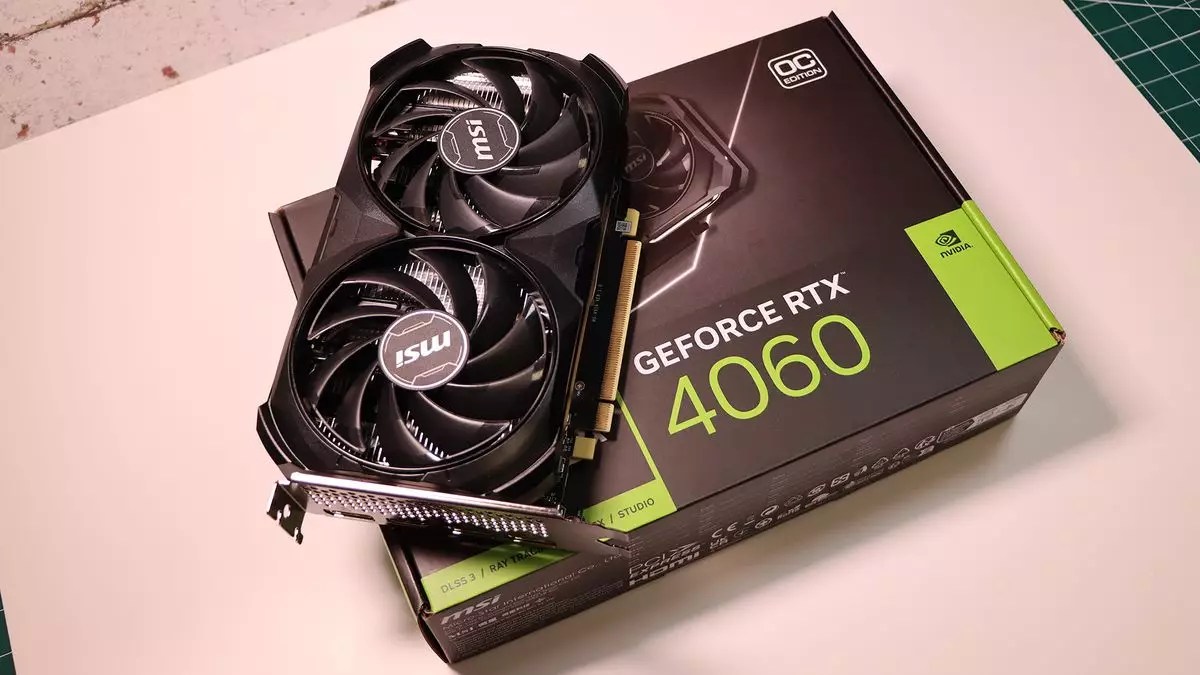The world of gaming hardware is ever-evolving, and with the release of the latest Steam hardware survey results, significant trends are emerging that indicate shifts in consumer preferences and market dynamics. With reports indicating notable gains in the adoption of Nvidia’s 40-series graphics cards, particularly the RTX 4060 and RTX 4060 Ti, it’s imperative to analyze the underlying factors contributing to these changes rather than merely digesting the statistics at face value.
The September Steam hardware survey outlines a positive trajectory for mid-range graphics cards. The RTX 4060 has seen its market share rise from 3.41% to 4.58%, marking a commendable increase of approximately 34%. This data, while representing a fraction of the overall gaming populace, points to a broader acceptance of accessible graphics solutions. The 1.17% increase in RTX 4060 users and 0.76% for the RTX 4060 Ti signifies a healthy demand, presumably influenced by recent discounts leading up to the anticipated release of next-gen graphics cards.
Such increments in user counts are not merely numbers— they bear witness to a shift in buying behavior, especially among gamers who might previously have considered high-end cards unaffordable. The notable price reductions on these mid-range cards signal an important moment for consumers, many of whom are looking to upgrade their gaming rigs without sinking significant financial resources during a time when high-end models often come with a hefty price tag.
It’s crucial to recognize the geographical nuances influencing these statistics. The survey also indicates a 1.54% uptick in the use of Simplified Chinese, potentially linked to the recent release of highly anticipated titles like Black Myth: Wukong. This hints at a burgeoning gaming market in regions such as China, where demand for capable gaming hardware is on the rise. The excitement surrounding these new games likely contributes to an uptick in demand for GPUs that can handle modern graphics, making the RTX 4060 an attractive option.
Moreover, it’s important to note that the surge in the mid-range GPU adoption could also be reflected across Western markets. With the impending launch of Nvidia’s RTX 50-series and AMD’s RX 8000-series architectures, many gamers may be inclined to invest in more affordable current-generation cards, aiming to balance performance and price effectively. The attractiveness of finding a quality card like the RTX 4060 under $300 could be the right incentive for a segment of gamers who have previously been sidelined due to pricing.
One cannot ignore the larger economic context surrounding these trends — the prolonged period of inflated graphics card prices has gradually subsided, bringing many cards back into the realm of affordability. This economic shift undoubtedly plays a crucial role in the decision-making processes of gamers. With Nvidia’s 40-series seeing significant price drops, including in traditionally expensive markets like the UK, a new wave of opportunities is opening up for aspiring and current gamers alike.
While the immediate surge in numbers is positive, it is essential to remain wary about overestimating the longer-term implications. Upcoming generations always prompt a temporary spike in current-gen product sales, but whether this leads to sustained engagement with the mid-tier offerings remains a question. As consumers play the waiting game for the next big thing, many will be hesitant to commit to new purchases until they better understand the price-to-performance curve of future releases.
Beyond the graphics card trends, the hardware survey reveals more nuanced changes within the software ecosystem, particularly operating systems. We see Windows 10 regain the lead over Windows 11 within the Steam environment, rising by 1.57% while Windows 11 sees a decline of 1.48%. This fluctuation raises questions about user satisfaction and compatibility within the gaming community, as many gamers evaluate whether the transition to newer technologies yields appreciable benefits.
Looking forward, the combination of evolving hardware options and shifting software preferences will likely shape the gaming landscape for the foreseeable future. As the dust settles from the current hardware trends, gamers will inevitably look toward innovative solutions and competitive pricing that will continue to redefine their experiences within digital realms. The gaming community stands at a pivotal junction, with much yet to be unveiled in the coming months.


Leave a Reply